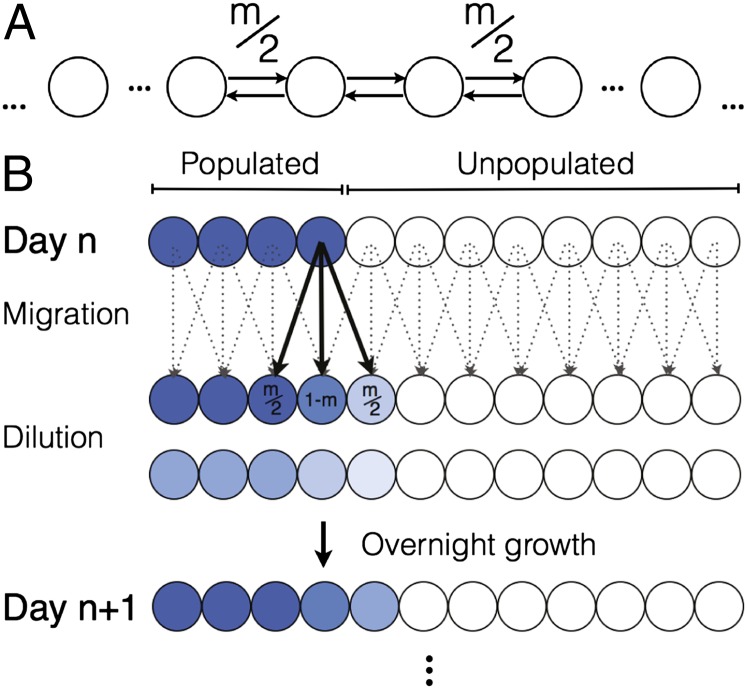Fig. 1.
Experimental realization of the stepping-stone model. (A) A schematic of a linear stepping-stone (or Levins metapopulation) model (41–43). The habitat consists of a linear array of subpopulations, each of which is either empty or contains a well-mixed population of individuals. Subpopulations are coupled to each other by nearest-neighbor migration with a fraction m leaving for the two neighboring wells at each time step. (B) Our daily protocol of growth, migration, and death follows the assumptions of the stepping-stone model. Each day, a fraction m/2 of the population from any individual well is migrated into each of the neighboring wells. Boundary conditions are reflective, meaning that wells on the edge receive a contribution m/2 from their only neighbor and 1 – m/2 from the corresponding well. Subsequently, the entire population is diluted by a dilution factor (ranging from 200 to 1,000) that is fixed for the duration of the experiment. The entire population is then grown for 22 h at 30 °C. The process is repeated for several days as the population expands into the unpopulated region. For all experiments, the environmental conditions are spatially homogeneous: all wells (including unpopulated wells) are seeded with identical growth medium [Yeast Extract Peptone Dextrose + Complete Supplement Mixture–His + 2% (wt/vol) sucrose + 0.4× histidine].

